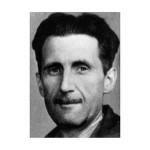A Plea for E.N.E.
One of the oldest maxims in writing is to never apologize for your work. With that said, I do need to couch this article. I stand by my premise 100%. However, there are always exceptions to a rule. One of my biggest influences in mediation is a former judge, and former Wisconsin Supreme Court Justice. I am not saying that a judge cannot mediate, but that you need to go in with your eyes open.
Too often when litigators are choosing a mediator (or even worse when a sitting judge is ordering mediation at a scheduling conference) the conversation goes something like, “So, should we use Judge X or Judge Y?” What does being a former judge necessarily have to do with being a mediator, let alone a good mediator?
As the late great comedian Mitch Hedberg said,
When you’re in Hollywood and you’re a comedian, everybody wants you to do things besides comedy. They say, “OK, you’re a stand-up comedian — can you act? Can you write? Write us a script?” . . . It’s as though if I were a cook and I worked [] to become a good cook, they said, “All right, you’re a cook — can you farm?”
I am certainly not the first to recognize this disturbing trend.


